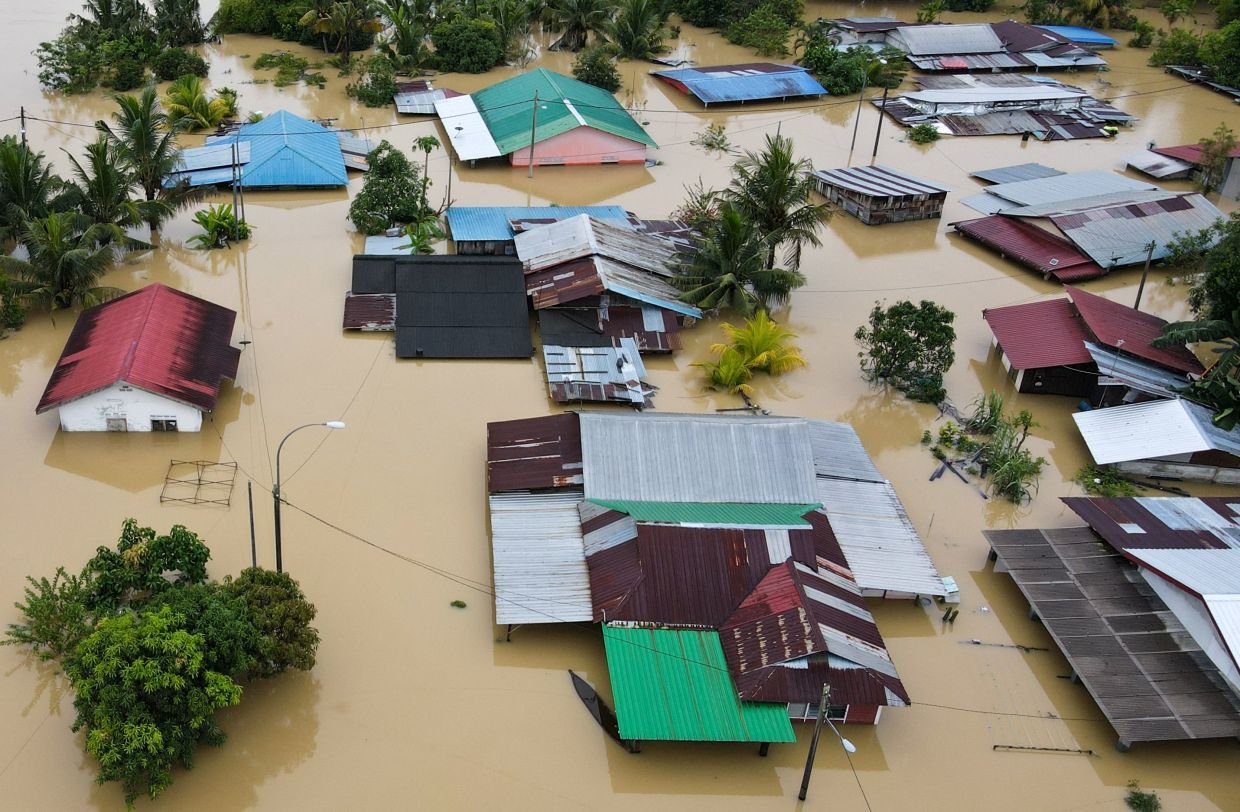Notifications


Posted by - News Worthy -
on - March 14, 2023 -
Filed in - Health -
286 Views - 0 Comments - 0 Likes - 0 Reviews

"When will this end?”
That was a question asked by Muhammad Isa Sulaiman, 58, who had to leave his flooded home in Parit Awang, Johor, with his wife and four children on March 1, 2023. On March 6, he returned by boat but his roof was still submerged, he told Channel News Asia. He was among the more than 50,000 people displaced by floods in Johor as at March 5.
For most Malaysians, the floods will “end” when they no longer make the news. For flood victims, the impact of the floods will be felt beyond receding waters, in damaged property or lost goods, and in the colossal clean up to remove mud, debris and sewage. Muhammad Isa feared the loss of his valuables, and his car, fridge, washing machine and chickens.
Today, Johor suffers from floods. Previously it was the Klang Valley. Tomorrow it will be who knows where. Just know this: this is not the end of extreme weather events and mega floods.
This is only the beginning of the climate crisis.
For the last few years, I have written repeatedly in this column on the urgent need to limit fossil fuels and revise energy policies. Average global warming is getting ever closer to the 1.5°C threshold, beyond which scientists predict we are headed for disaster.
We may see cities go under water and “unprecedented heatwaves, terrifying storms, widespread water shortages and the extinction of a million species”, the United Nations has warned. Extreme weather may become the norm. Already, the past seven years have been the warmest on record. It’s likely that the next seven years will be warm, warmer or the warmest ever.
That’s why we must work on climate adaptation – large-scale changes to minimise the impact of climate change, such as infrastructure defences or behavioural shifts. We’ve barely moved in this area.
A National Adaptation Plan for Malaysia has been talked about since 2015 but is yet to become a reality.
“Adaptation needs to be a core part of climate action planning. This is not even a question,” says Malaysian climate expert and advisor Renard Siew.
“There should be immediate steps taken to re-evaluate where the hotspots and risk areas are and to mitigate these floods,” he says.
Adaptation thinking needs to start at the design stage not as an afterthought, he adds. The “perceived exorbitant costs” may be off-putting, yet in reality, adaptation investments can serve many purposes with immediate benefits. For example, he says, the strengthening of river embankments could be used to create pedestrian walkways. An area of opportunity in Johor is “green adaptation” – vegetation that can reduce heat and flood risks while also improving air quality and citizens’ wellbeing.
The social aspect must also be considered, because floods particularly impact vulnerable groups, points out Ili Nadiah Dzulfakar, co-founder and chair of Klima Action Malaysia (better known as Kamy), which is working with affected indigenous people in Johor. Floods exacerbate inequality caused by the lack of social protection or risk transfer mechanisms, she says.
Floods must be examined not just from the nexus of land-use planning, urban development, and forest degradation, but also through a human rights lens, says Ili Nadiah, calling for “public participation that is meaningful and inclusive in all decision-making spaces”.
She has joined many civil society organisations in calling for a Freedom of Information Bill with provisions on climate and environmental due diligence and in urging local governments to establish local councils comprising grassroots residents’ associations and other groups to increase local resilience and empowerment.
Transparency is critical. It is hard, for example, to get clarity on data on deforestation in Malaysia, which we know can contribute to flooding because forests act as “sponges” for rainfall.
In Johor, over a 10-year period (2001 to 2021), 745 kilohectares of tree cover were lost, equivalent to a 47% drop in tree cover since 2000, reports Global Forest Watch. Large tracts of the Jemaluang and Tenggaroh forest reserves have been degazetted, and an undisclosed portion of land was transferred to private ownership; since then, it has been partly cleared and converted into oil palm plantations and a gold mine, reports Macaranga, a journalism portal covering the environment and sustainability in Malaysia.
The loss of large parts of the biodiversity-rich Jemaluang forest has impacted local residents and resulted in herds of elephants searching for food and coming into conflict with humans in the process.
Land and forest management is complex and politically-sensitive, falling under both state and federal government jurisdictions. In the face of the climate crisis, we need to have tighter controls and prudence.
We also need openness. The government is currently “re-tendering” six flood mitigation projects with “selective tendering”, Malaysia's Deputy Prime Minister Datuk Seri Dr Ahmad Zahid Hamidi said recently (“Re-tender for six flood mitigation projects will not take long”, The Star, Feb 27). But why not open tender? What went wrong to cause the re-tendering? We need to get things like this right and work to the highest standards. So much is at stake.
It is unfathomable how extreme weather can be now. Floods in Pakistan in October 2022 covered a third of the almost 800,000sq km country, wiping out the homes of 14 million people, and floodwaters did not recede for months.
We must enhance our ability to respond and recover from disasters, and reduce our risks. Mega floods will not end. But we can build climate resilience and reduce the hardship that people like Muhammad Isa will face.

